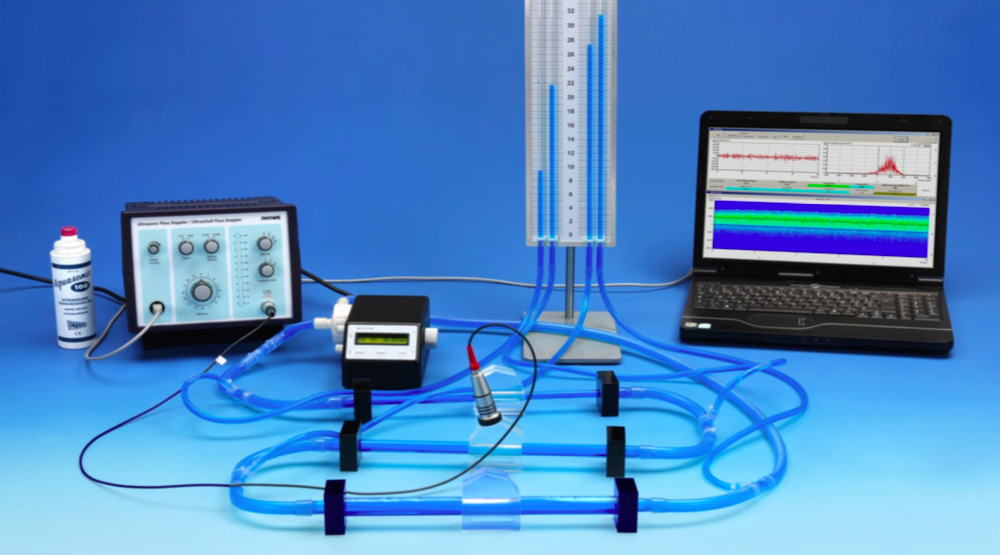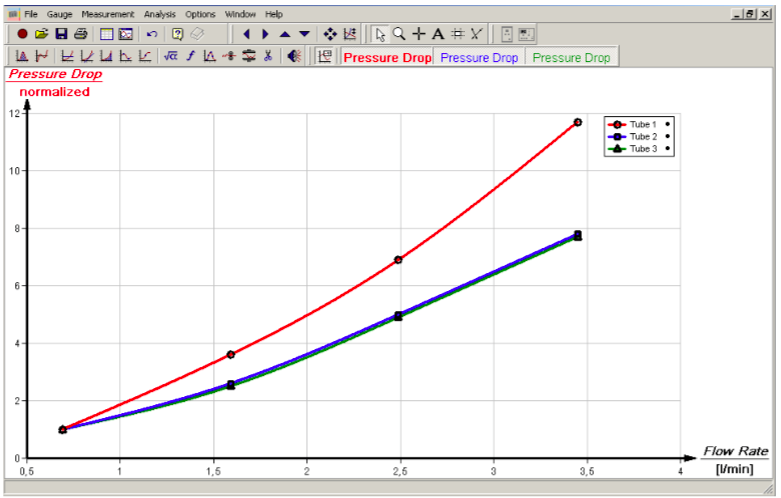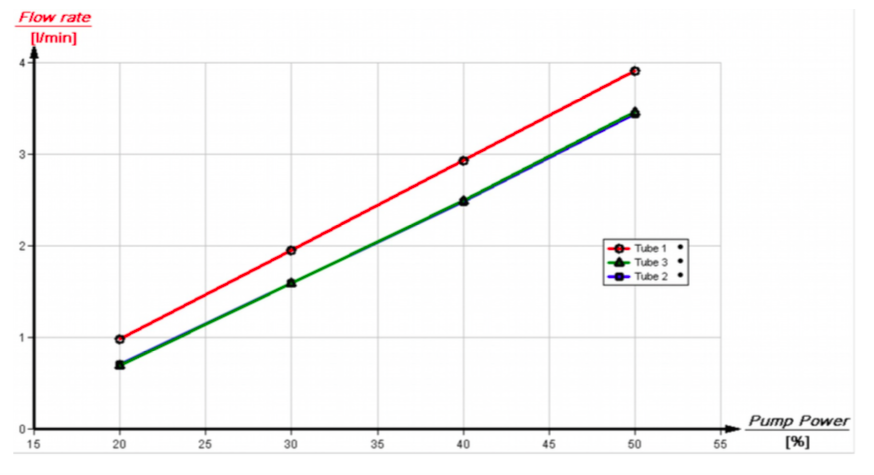Item no.: P5140100
Principle
The ultrasonic Doppler effect is used for studying the laws of steadily and laminarly flowing liquids in a tube circuit, which form the basis of numerous technical applications. The experiment focuses particularly on the relationship between the flow velocity and the crosssectional tube area (continuity condition) as well as on the relationship between the flow resistance and the tube diameter (Hagen-Poiseuille law). If the geometry is known, both relationships can be used to determine the dynamic viscosity or fluidity.
Tasks
- Determine the mean and maximum Doppler frequency shift (f_mean, f_max) for four different pump speeds and three different tube diameters with the Doppler ultrasound unit.
- Calculate the mean flow velocity in accordance with the Doppler law as well as the flow rates based on the known tube cross-section and in accordance with the continuity equation.
- Measure the pressure drop for the various different flow velocities and tube diameters with the aid of the vertical tubes.
- Calculate the flow resistance in accordance with Ohm’s law based on the pressure drop and on the flow rate. Examine the dependence of the flow resistance on the tube diameter (Hagen-Poiseuille law).
- Calculate the dynamic viscosity based on the Hagen-Poiseuille law and on the known geometry.
- Calculate the Reynolds number for the different tube diameters based on the flow velocities and make a statement concerning the flow characteristics of the different tubes.
What you can learn about
- ultrasonic Doppler effect
- steady, laminar and turbulent flow
- continuity equation
- Bernoulli’s equation
- Hagen-Poiseuille law
- flow velocity and flow resistance(static and dynamic)
- pressure, pressure scales
- viscosity and fluidity
- ultrasonic flow measurements



